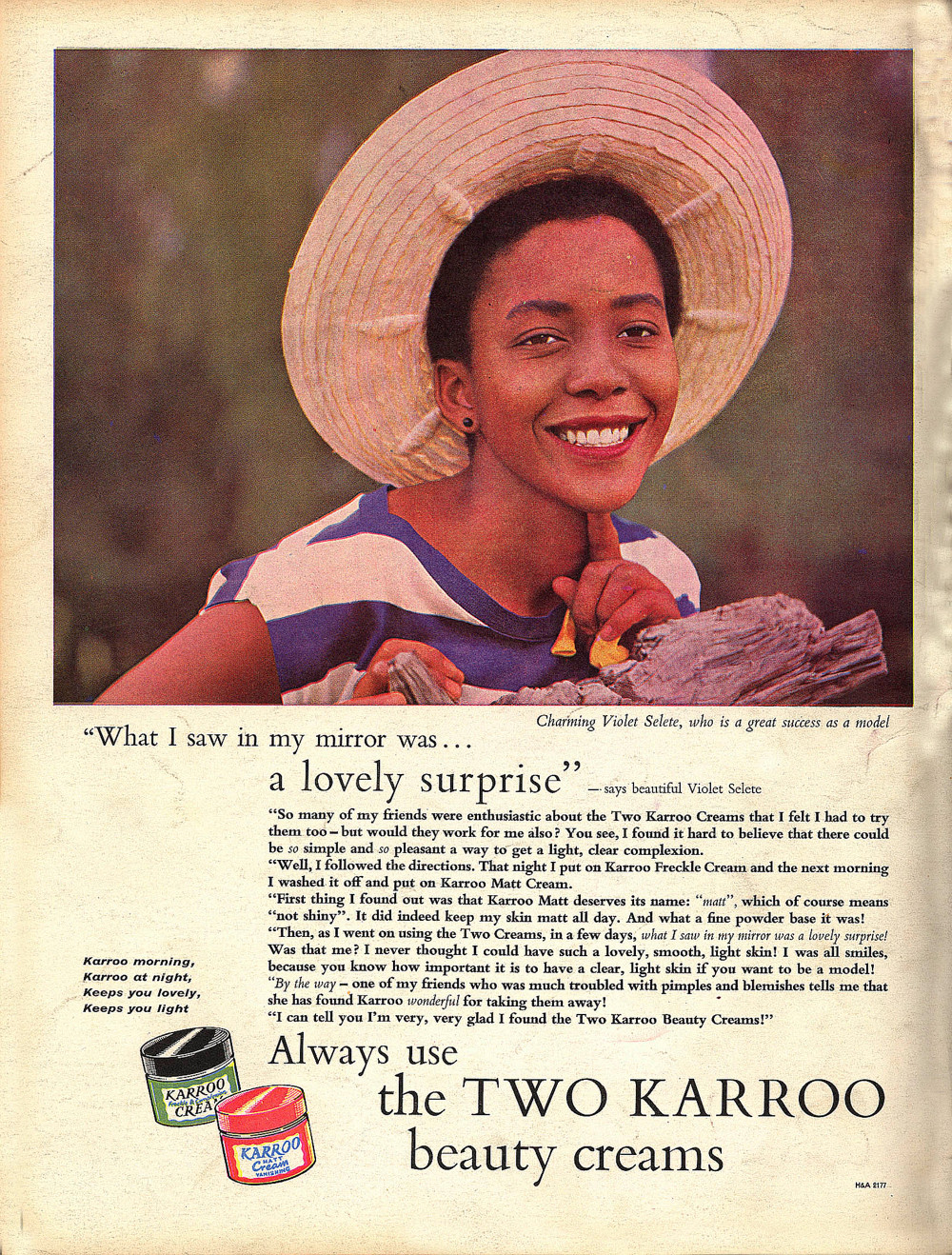The cosmetics industry has made billions out of people who think that being light or white is right.
The White Plan. No, this isn’t the title of a long-lost treatise on race relations by Adolf Hitler or Hendrik Verwoerd or Asa Carter (take your pick) – it is the name of a skin-lightening cream peddled by a major French cosmetics label.
I learnt of this product and its existence rather rudely. After a gruelling few weeks on the go, I decided to treat myself to a facial at a spa to rejuvenate my dry and flaky skin. Every girl has that right. Admittedly, it had been a while since I had preened and pummelled myself to fit in with the rigours and demands of modern city life.
I knew I deserved the lecture, too, so I bore it with patience. The beauty therapist went on at length about how dehydrated my skin was. I quietly conceded and consented to her helpful tips.
After being scrubbed, smoothed and plucked, I emerged looking like new. But, before I could escape, the beautician rather surreptitiously slipped me a little tube that, she suggested, might be helpful. “You’re a yellow bone,” she said. “You should use this to get rid of blemishes and dark spots on your skin.”
Being referred to as a “yellow bone” made me bristle, because it is a term I loathe. But my curiosity about this cure-all cream got the better of me. The only magical skin recovery I knew of was getting a facial and plenty of rest – and drinking gallons of water. Perhaps I was missing out on some secret formula.
The expensive-looking salve was a white tube in a white box called White Plan. I was intrigued by the name and took a closer look.
I was shocked to find that the beautician was peddling a skin-lightening cream. The words are written in an elegant silver font and they leap off the box. It doesn’t even pretend to be something else by using some cheery euphemism such as “skin brightener”. No, the message was clear: it is a skin lightener. So, if your intention is to be white, there is a plan – White Plan.
I declined the offer, almost leaping off the bed to make my exit.
For as long as I can remember, skin lighteners were something the Krok brothers made piles of money from; those creams containing damaging chemicals are now illegal in South Africa. Back then, they were to be found in dingy shops, not sold at high-end spas bearing the names of fancy French cosmetic labels. Shows you how much I know.
Skin lighteners were loathed in the areas where I grew up because they fed into the ugly spectre of what is known as “colourism”. It is a form of intra- and inter-ethnic prejudice on the basis of skin shade. It is discrimination within communities of colour against those with darker skins, and it places a premium on the looks and intelligence of those with fairer skins. It’s nonsensical, of course.

Blackward thinking: An advertisement in Drum magazine from June 1963. (Drum Ads/Baileys African History Archive/Africa Media Online)
American author and motivational speaker Iyanla Vanzant has described it as “the consequence of the internalisation of a white-dominated society’s entrenched white racial preference”.
The phenomenon is as old as racism and colonialism. It occurs with varying degrees of intensity in places such as the United States, India, the Caribbean and Africa. The cosmetics industry has made billions out of people who think that being light or white is right.
In the US, its roots lie in slavery, when slaves who were of mixed race and fair-skinned often worked inside the master’s house, while those who were darker-hued ended up in the fields. Hence, the hierarchy of darkness was infused with preference and privilege.
Given that we know the nasty origins of this, why do we still perpetuate it among ourselves and not reject it with the disdain it deserves?
I ask this because, of late, I have seen an increasingly popular use of the term “yellow bone” in our lexicon. Again, we have taken on an Americanism, internalised it, popularised it and brought its wretched history into our lives.
That’s not to say that this form of discrimination didn’t exist in South Africa before that – it always has. It was just another layer in our multitude of complex inequities and prejudices.
So why is it coming to the fore again? You would think that, with institutionalised racism a thing of the past, the deconstruction of its language and behaviour are things we would embrace.
The term “yellow bone” refers to fair-skinned black people, whose looks are often described as being superior to those of darker-skinned people. The term creeps up on us often: people use it when bantering about their preferences for partners, or when assessing attractiveness.
It’s sometimes used in jest but I fail to see the humour because I don’t understand why, in this day and age, we would use the same tactics that were used to divide and rule us.
There are incredibly painful and traumatic associations for people who have felt the sting of colourism, and to bandy this term about is to thumb our noses at them.
It also means we not only internalise it but engender it. Decolonising minds must also mean that we reject the language used against us. The cosmetics industry has made a packet of money from this pernicious form of racism; let’s not feed the beast of discrimination by encouraging this divisive and insidious language.